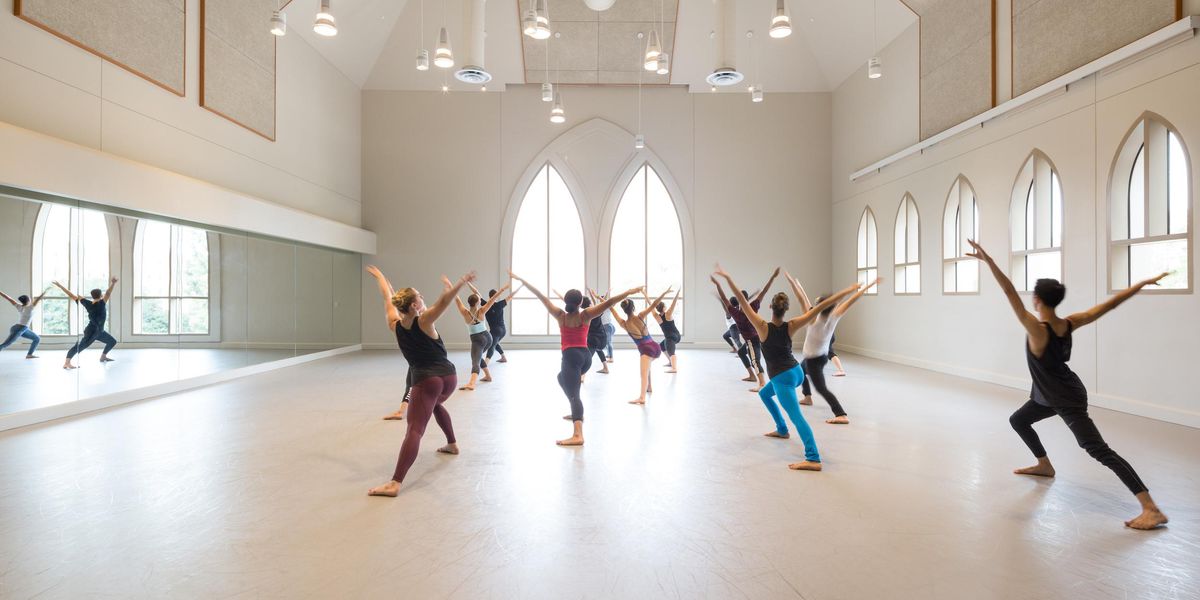Pacific Northwest Ballet
New York City Center
Feb 13 & 15, 2013
In addition to Roméo et Juliette, Seattle-based Pacific Northwest Ballet brought to New York a program of Balanchine: Concerto Barocco, Apollo, and Agon. But the company might as well have brought Prodigal Son, because the big splash was the return of New York City Ballet ex-soloists Seth Orza, and in particular, Carla Körbes, who has reached every bit of the marvelous potential she displayed when she departed New York in 2005.
Körbes and Orza danced the title roles in Jean-Christophe Maillot’s 1996 production of the Shakespeare play, with Prokofiev’s expressive score played vivaciously by the company’s own orchestra. (The score and scene structure are shortened and compressed.) The set—curved, freestanding walls and a moveable ramp (by Ernest Pignon-Ernest)—and striking costumes of metallic, crocheted chain mail, quilted jackets, and sheer crinoline (by Jérome Kaplan) are futuristic and underscore the tale’s timelessness. The masks that supposedly disguise the characters at the ball are extensions of skullcaps that encircle one eye.
The story has shifted to revolve around the figure of the Friar (danced by the sleek William Lin-Yee), a moral barometer and soothsayer of the tragic and emotional consequences of the performers’ actions (there’s a lot of foreshadowing in general); two acolytes shadow him. The nurse’s character is given slapstick sequences, and Paris’ role is pared to a minimum.
Maillot adds a dash of bawdiness. Mercutio and Benvolio are wiseacre buddies who don’t shy from groping women or roughhousing with the guys. A Punch and Judy style puppet show predicts the fates of the protagonists. There are no swords in sight; the only weapons are a fist on a stick from this sideshow, and some strips of cloth that become garrotes. Battles are expressed through stylized movement—cartwheels, windmilling arms, or leg-whipping leaps. Momentous passages, as when Romeo chases down Tybalt—are done in slow motion, which is effective, if heavyhanded. Maillot also freezes the action entirely while the Friar moves through clusters of dancers, pondering their futures.
Seth Orza as Romeo (top) and Batkhurel Bold as Tybalt
Photo ©Angela Sterling, Courtesy PNB
Maillot’s movement style is a lyrical blend of ballet tweaked with right-angle elbows and pedestrian gestures. In Romeo and Juliet’s first duet, they dance with their eyes closed, hands fluttering about one another like hummingbirds, or snaking like fish. Körbes sits atop the ramp, legs outstretched, and amusedly watches Orza dance for her. The action builds quickly and sustains vigor throughout their duet, until—once again—their deaths are foreshadowed in their poses, Körbes arched, unmoving, on Orza’s thighs. It’s rewarding to see Orza in a major dramatic role, and Körbes is dancing with as much breadth, luminosity and delicacy as any ballerina around.
In the final act, Juliet and her mother (the dashing Laura Gilbreath) dance shoeless, with vulnerability—all the better to show Körbes’ beautifully articulate feet. When a length of drapery is whisked away, Juliet’s bed transforms into a tomb. Once Romeo kills himself in grief (it’s not exactly clear how he dies; his head seems to hit the corner of the tomb) and Juliet reawakens, her toes mindlessly caress Romeo’s outstretched hand. When she realizes he’s gone, she strangles herself with a blood-soaked scarf.
The lone Balanchine program showcased the company’s technical soundness under Peter Boal’s direction. Despite a few jitters, the company eased into a confident, light musicality, looking relaxed to the point of boredom. It doesn’t help that, relative to the Koch Theater, where we usually see Balanchine, the dancers are quite close to the audience so their faces are far more legible. Laura Gilbreath and Lindsi Dec both showed lovely lines and a careful rendering of Concerto Barocco; the solid Batkhurel Bold danced without flourish, face solemn throughout.
Kylee Kitchens, Jonathan Porretta, and Elizabeth Murphy in
Agon, choreography by George Balanchine, ©The George Balanchine Trust
Photo ©Lindsay Thomas, Courtesy PNB
Orza delivered a relatively mature, less coltish rendering of Apollo, with Körbes, Maria Chapman, and Lesley Rausch as his muses. Even more than as Juliet, Körbes distinguished herself as Terpsichore. Perhaps it is the simplicity of the lines and movement phrases in Apollo that reward Körbes’ elegant proportions and highly arched feet. In Agon, Jonathan Porretta danced with jauntiness and energy, and Chapman moved crisply, with a contemporary feel.
The run was a success as it left us wanting to see more, although the programming balance is somewhat questionable. It also reminded us of two dancers who got away, and who are now thriving artistically.
Pictured at top: Carla Körbes and Seth Orza of Pacific Northwest Ballet in Jean-Christophe Maillot’s
Roméo and Juiliette
Photo ©Angela Sterling, Courtesy PNB




